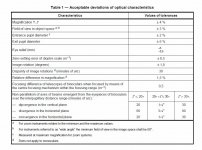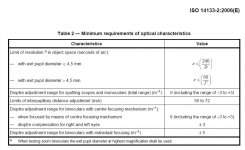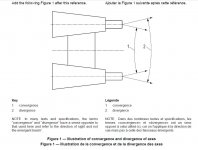henry link
Well-known member
The Conquest 8x42 HD measured 4.7/4.7 centre resolution in arc seconds. How does that compare with the alphas ?
https://www.all4shooters.com/en/Shooting/optics/Zeiss-Conquest-HD-8x42/
All those 4.7/4.7s in the chart suggest to me that 4.7" was the limit of the test set-up.
I agree with David. 3.5" would be a good result for the full aperture of a 42mm binocular. Keep in mind, however, that 3.5" works out to 147/D, a pretty poor result if the binocular were held to the same standards that apply to high quality telescopes.
Last edited:






